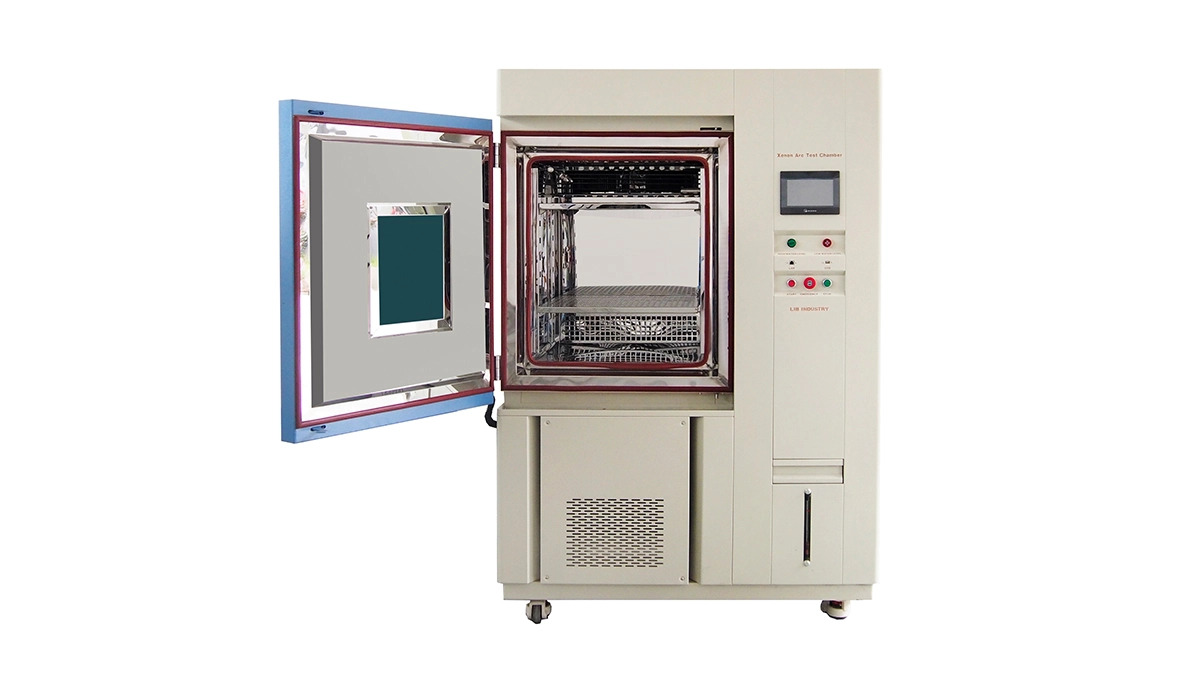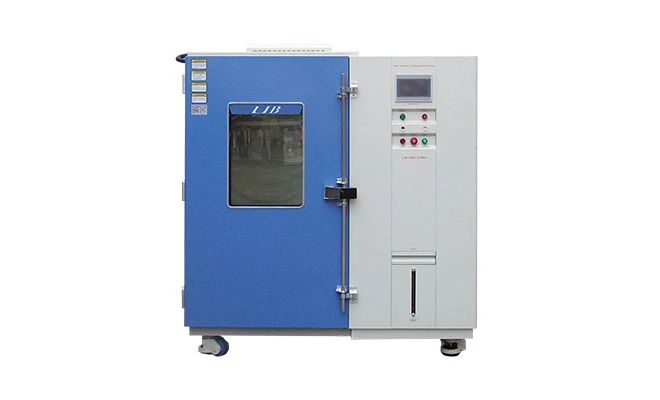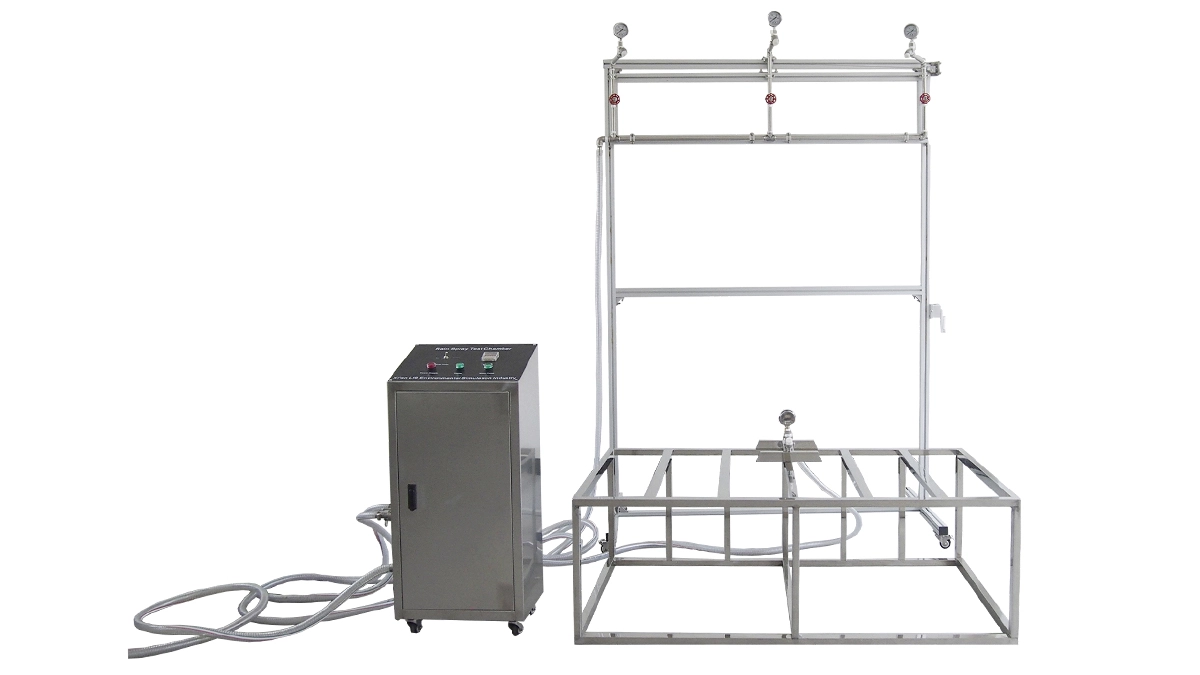

A rain test chamber is a device used to simulate natural rainwater environments, commonly utilized to test the performance of various products under rainy conditions. This article introduces the working principle and performance characteristics of the rain test chamber.
The basic principle of a rain test chamber is to simulate a natural rainwater environment, providing the tested products with a realistic rainwater experience. The rain test chamber consists of a chamber body, a water spray device, and a control device. The chamber body is used to place the tested products, the water spray device simulates the rainwater environment, and the control device manages the testing process and control rainwater’s condition.
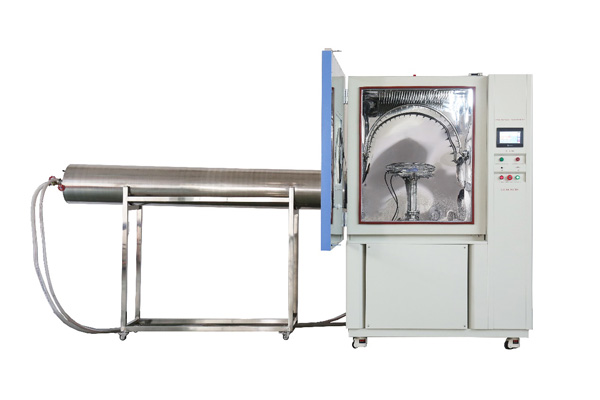
Rain test chambers come in various models and sizes, each designed to meet specific testing requirements. Below are some common specifications and features of rain test chambers:
1. Chamber Dimensions
Internal Dimensions: Vary depending on the model, typically ranging from small (500mm x 500mm x 500mm) to large (2000mm x 2000mm x 2000mm).
External Dimensions: Correspondingly larger to accommodate the internal chamber and additional equipment.
2. Spray Device
Nozzle Type: Various nozzles available to simulate different types of rainfall, such as fine mist or heavy downpour.
Spray Angles: Adjustable nozzles to achieve different angles, typically 0°to 180°.
Water Flow Rate: Adjustable flow rates, commonly ranging from 1 to 20 liters per minute.
3. Water Supply System
Water Source: Can be connected to a direct water supply or use a built-in water tank.
Automatic Filtration System: Often includes filters to ensure clean water is used for testing, filtering impurities in 0.03mm particles.
4. Control System
Programmable Controls: Advanced models feature touch screen interfaces and programmable controls for setting various test parameters.
Temperature Control: Some chambers include temperature control ranging from -10℃ to +88℃ to simulate different environmental conditions.
5. Performance Parameters
Rainfall Intensity: Adjustable to simulate light drizzle to heavy rain, typically measured in L/h.
Duration of Test: Can be set from a few minutes to several days, depending on the test requirements.
Pressure Range: Adjustable water pressure for IPX9K, the highest pressure can reach at 50 bar.
6. Safety Features
Emergency Stop Button: Easily accessible emergency stop for immediate shutdown.
Leakage Protection: Equipped with leakage sensors and in case of electricity conduction.
Overload Protection: Protects the chamber from electrical overload.
7. Material and Construction
Chamber Material: Typically made from 316 stainless steel or other corrosion-resistant materials.
Viewing Window: Includes a viewing window with wipers to observe the test in progress.
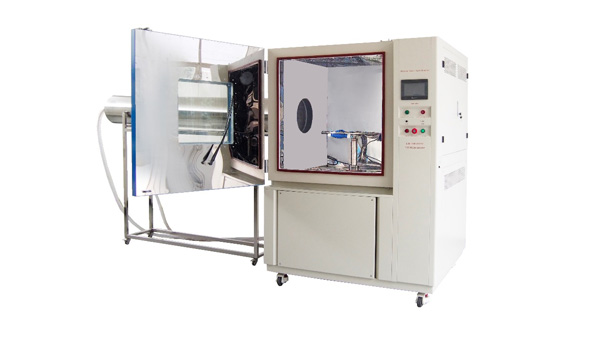
Simulation of Natural Rainwater Environment: Provides tested products with a realistic rainwater experience.
Adjustable Spray Device: Allows for the simulation of different rain volumes and angles.
Control of Test Temperature and blow wind speed: Simulates rainwater environments under different climatic conditions.
Automated Control: Enhances testing efficiency.
Safety Protection Devices: Ensures the safety of the testing process.
Electronics Industry: Used to test the waterproof performance of products such as mobile phones and computers.
Automotive Industry: Used to test the waterproof performance of automotive components.
Building Materials Industry: Used to test the waterproof performance of building materials.
In conclusion, as a device that simulates a natural rainwater environment, the rain test chamber has broad application prospects. In the future, with continuous technological advancements, the performance of rain test chambers will be further enhanced, providing more reliable testing methods for product development and quality control.
 English
English русский
русский français
français العربية
العربية Deutsch
Deutsch Español
Español